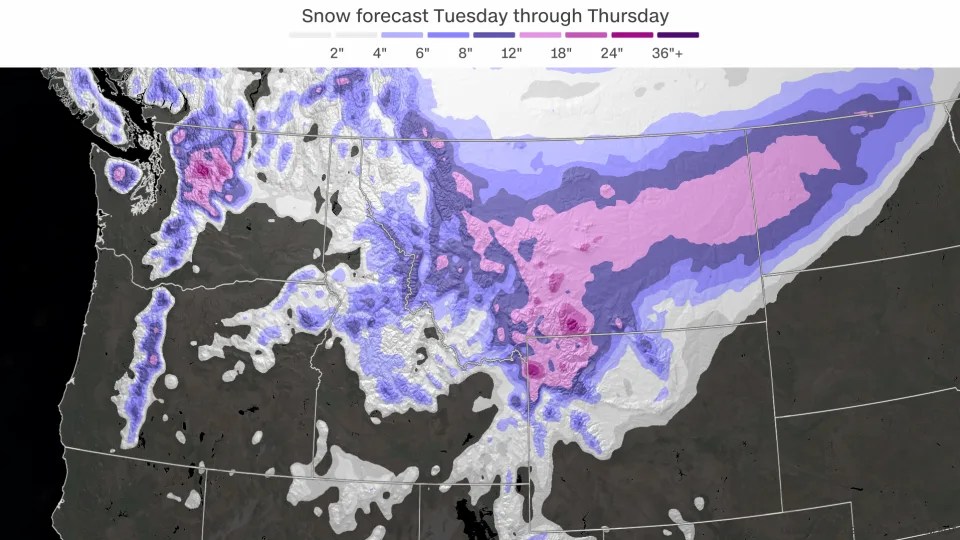(CNN) — The first significant snowfall of the season threatens parts of the U.S. Northwest and Northern Plains, and by the time the last flake falls, many high elevations will be buried in more than a foot of fresh snow.
Cold air and deep moisture will spread across much of Montana from Washington and Oregon on Tuesday before a powerful storm hits the northwest Tuesday night.
Flakes will begin to fall Monday night or early Tuesday as the storm’s moisture moves across Washington’s Cascade Range. The higher the altitude, the greater the chance of snow and travel complications. Several high mountain passes in this part of the range may be affected, including Stevens Pass, Snoqualmie Pass, and Stampede Pass.
Snow will begin to fall across the U.S. Northwest Tuesday afternoon and evening. Snow accumulation will begin to cover parts of Idaho and Montana and layers in Oregon during this window, while temperatures will not rise above freezing.
Temperatures will drop sharply this Tuesday night, dropping below freezing at many high elevations. Temperatures in northern Idaho will drop to -7 to -12°C early Wednesday, with parts of northwest Montana around -12°C.
A combination of cold air and plenty of moisture will set the stage for heavy snow Tuesday night. Six inches or more of snow Tuesday night will be close to a foot for areas above 7,000 feet.
Snow accumulation will increase in the Northwest and Northern Rockies this Wednesday. At this time the wind speeds up and blows snow, which significantly reduces visibility and makes travel difficult.
Although the most significant snowfall from this storm will occur at higher elevations, some lower elevations in Washington, Montana and South Dakota will not be completely spared from the winter weather.
Parts of Washington will get a few inches of snow up to 1,000 feet on Wednesday, but Seattle will only face freezing rain.
This Thursday, the snow will begin to move lower in the layers, but spread across the northern plains as the storm moves east. More than a foot of snow will bury parts of South Dakota through Thursday night.
Another danger arises where the snow reaches lower altitudes: melting and refreezing. Any snow that melts during the day can freeze overnight, causing treacherous ice on roads and sidewalks.
This Friday, significant snow accumulation will end across much of the northern United States, but some flakes will fly over the US-Canada border before the storm moves fully into southern Canada.





